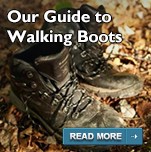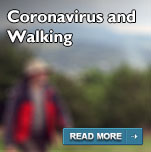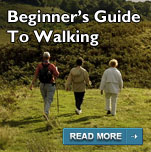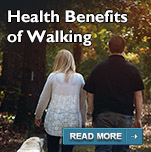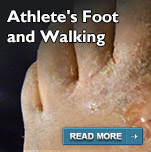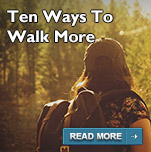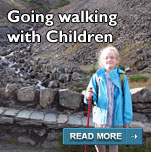Walking in the Sun - Our Guide to Sun Safety
When the sun comes out, so do many more people for a walk.
After all, what could be better than a lovely walk in the countryside on a beautiful sunny day?
But how do you keep safe when walking in the sun...?
Get a few days of sunny weather - especially at a weekend - and even the usually quiet treks in Britain can become busy with people enjoying a walk in sun. But we need to be careful here... not wearing sunscreen when you should and you risk being sunburnt. And research has shown people who have had sunburn are more than twice as likely to get melanoma than those who have not. The thing to remember here is sunburn isn't about heat, it's about Ultra Violet Radiation - or UV radiation.
Melanoma is the most serious type of skin cancer and is the 5th most common cancer in the UK. Skin cancer rates are more than 4 times higher now than they were in the late 1970s in Britain.
So what can us walkers do to be safe whilst walking in the sun? Well here we've listed several of the most common myths surrounding being safe in the sun, and then we've got some top tips for sun safety (click here to jump to those now).
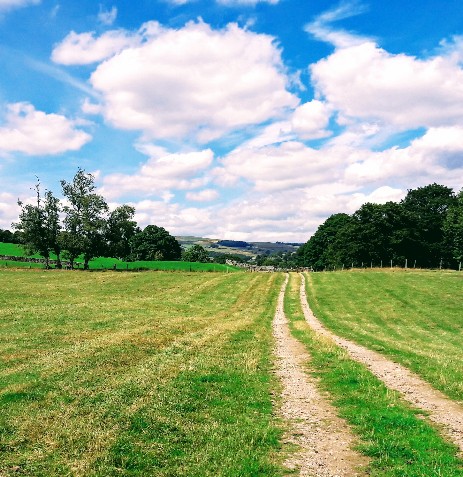
Myth 1: You can't get a sunburn when it's cloudy or cool
Well, you can. Although it is true clouds do act as a block, in reality up to 80 percent of the sun's UV rays can pass straight through. So, partly cloudy conditions do not reduce the sunburn risk by much at all.
What often happens on cloudy days is people make the mistake of staying outside longer without suncream than on clear sunny days... It is the increased time being exposed without suncream which makes up for the slight reduction in UV radiation - hence people often get just as bad sunburn than on bright, sunny days.
And even when there's a breeze and it does feel that hot, your skin is still getting the same amount of UV radition as when there's no breeze and the temperatures are hot. It doesn't matter if you feel hot or cool, the risk of sunburn is the same.

Myth 2: ‘You can only burn in the middle of summer’
In Britain, the sun can be strong enough to burn from the start of April to the end of September - even if it doesn’t feel that warm, or it’s a cloudy day.
So, it's important to keep an eye on the UV Index in weather forecasts, as this will tell you how strong the sun is where you are going to walking. If the UV Index is 3 or above, you should think about protecting your skin - especially if you get sunburnt easily or have lighter skin.
You'll find the UV Index mentioned on weather forecasts on television and radio, but usually only if it is a particular risk. The best place to look is the Met Office website here - which has interactive maps for the next 6 days.
UV Index | Risk |
1-2 | LOW - No Sun Protection Needed |
3-5 | MODERATE - Think about Sun Protection |
6-7 | HIGH - Sun Protection Needed Especially 11am - 3pm |
8-9+ | VERY HIGH - Everyone Needs Sun Protection |

Myth 3: You can't get sunburn in winter
Not true - especially if you enjoy winter mountain walking.
Snow can reflect up to 80 percent of the sun's UV rays - which increases your exposure.
And remember, the higher your altitude, the greater your UV exposure is anyway.

Myth 4: A SPF50 sunscreen is twice as better than a SPF25
It's easy to think that if the numbers in sunscreen have doubled, then the amount of protection is doubled too. It means you can go out in the sun twice as long with a SPF50 than with a SPF25.
Well, both of these are wrong.
There is evidence that higher SPFs reduce the risk of melanoma compared to using no sunscreen or a lower than SPF15, but researchers have found that as SPF increases, the additional UV the sunscreen can absorb tails off.
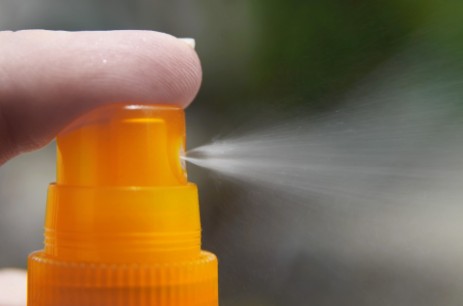
So, a SPF30 sunscreen filters out about 96.7% of the sun's UV radiation, but the more expensive SPF50 sunscreens filter 98% of UV. So SPF50 only offers marginally better protection from UV radiation - and often costs a lot more.
Research also suggests people using a higher SPF sunscreen may stay out in the sun for longer and fail to apply sunscreen regularly - therefore increasing their risk of sun damage.
If applied properly and regularly, a SPF30 is enough to protect you wherever you go walking - unless, of course, your doctor had recommended a higher SPF because of a specific medical condition.
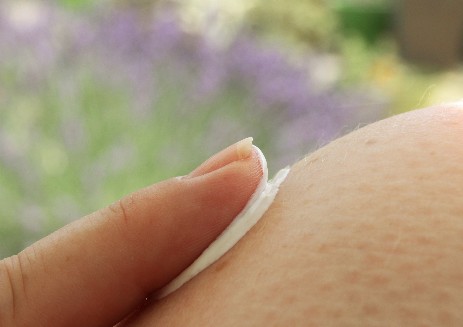
Myth 5: A suntan actually protects you from sunburn
Any suntan is the result of the body defending itself against further damage from UV radiation. So in a way, it is true - but only to a very limited degree. A suntan on white skin, for instance, only acts like a SPF4 sunscreen - so not much protection at all.
Many people aspire to "a perfect tan", but it's worth remembering that any tan at all indicates damage to your skin.
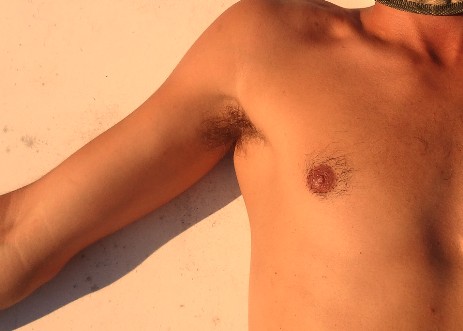
Myth 6: Sunscreen lasts forever
We’ve probably all a collection of old bottles of sunscreen in a cupboard somewhere - and at the first sign of a hot day, we turn to one which looks like it is the youngest, and hoped for the best.
The truth is most sunscreens do expire. Look on the bottle for the open jar icon - and the number there will tell you the number of months the product can be used after opening.
Ok... but that's little help when you come to use a bottle of sunscreen and you can't remember when you opened it! So here's a tip... the next time you open a new bottle of sunscreen, write the date on it with a permanant marker pen or a CD writer pen. That way, the date won't rub off, and you'll know when you opened it and when it should be thrown away.
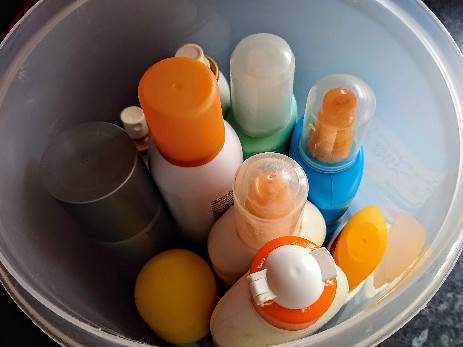
Myth 7: It's the hottest at noon
Firstly let's remember that from a sunburn perspective, it doesn't matter when the hottest part of the day is, because as we've already mentioned, sunburn is about UV radiation, not heat.
But, it makes sense to know when the hottest part of the day is so we can avoid walking in it for comfort... so that must be noon, when the sun is at its' highest in the sky, right?
Well, again nope! Actually in the UK, the hottest part of the day is usually between 2 - 3 pm.

TOP TIPS FOR WALKING IN THE SUN
So now we've gone through many of the common myths about sun safety, here are our top tips for staying safe whilst walking in the sun...
- Protect your skin
Wear a high SPF sunscreen - SPF30 is fine - and make sure cover all the areas which will be exposed to the sun. Re-apply cream regularly, especially if you sweat.
- Wear UV protecting clothing
Some outdoor brands have a special range of clothing with shorts, t-shirts and shirts that feature a high SPF sun protecting rating built-in. These are a great idea but keep an eye on the length of time the SPF sun protecting nature lasts - some brands SPF lasts for some many washes. And also remember, they only offer protection to the skin underneath the clothing - not to any other parts of the body!
- Wear light colours
Wearing white or lighter colours will help to reflect the hot sun, rather than black or darker colours that tend to absorb the heat.
- Wear a sun hat
A hat with a wide brim all the way around will keep more sun off your head, face and neck. Now where have we seen hats like that then???

- Drink plenty of water
When it's hot, it is more important to stay hydrated - and there's really nothing better than water. If you aren't keen on plain water, add some flavour with a cordal or invest in one of the special water bottles with a holder for a piece of fruit inside. An insulated water bottle is very useful on a hot day as you can use ice-cold water and the insulated-ness will keep it cold throughout the day.
- Change the time you walk
Either set off earlier in the day or later in the afternoon when it's cooler to avoid the highest temperatures of the day.
- Take a break
If you can't change the time you walk, then perhaps try to schedule a break from the sun somewhere at the hottest point of the day - usually between 2pm - 3pm in the UK.
- Oh... and sunglasses!
Yes... possibly an obvious one, but a pair of sunglasses are very useful when walking in the sun. If you wear glasses, you can get prescription sunglasses, and if you are outdoors walking often, these are a good investment.


